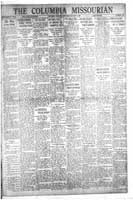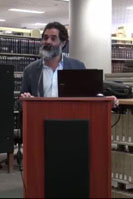<a href="#material">Jump to scrapbook.</a>nnThis volume is the scrapbook the MU Alumni Association kept from 1877 through 1931. The scrapbook contains meeting minutes, financial reports and receipts, commencement programs, photographs, and other miscellaneous items.nnThese numbered scrapbook pages are arranged in chronological order. Pages 275-278 and 293-294 are missing from the scrapbook. Pages 304-428 have a page number stamped on the page, but no content. For the digital copy, pages 306-427 were not scanned.nnSome pages have attached multi page documents or envelopes containing loose documents. These documents have been added to a collection called Accompanying Material. To see additional material from these pages, go to the corresponding page within the Accompanying Material collection.n<h1>Notes about the digital version</h1>nBecause they contained no content, pages 306-427 were not scanned. nnThe text on many pages of this volume was faded from age or too light for adequate viewing. To rectify this, many pages were manipulated in Photoshop to darken the text. This also had the effect of darkening the entire page. Due to the nature of the text, text recognition (OCR) success was minimal. This will have an effect upon full text searching. nnPages within the scrapbook that contained loose objects, multi-page documents, or rotated documents or photographs were added to the Accompanying Materials collection. The images in this collection are best viewed by selecting the "Pages" viewing option after selecting the page you want to view. nn<h1>About the Mizzou Alumni Association</h1>n<p>The Mizzou Alumni Association, originally called the Alumni Society, was formed in 1853 with Odon Guitar serving as the first president in. In 1883, alumni voted to raise $10,000 to endow the association. The St. Louis and Kansas City alumni chapters were formed in 1889 and 1891, respectively. Over the next fifty years the Alumni Association continued to grow and by 1907, over 3,000 men and women had graduated from the University and fifty alumni chapters had been formed. By 1910, alumni chapters existed on both the east and west coasts. Today, the Mizzou Alumni Association includes over 120 chapters including international chapters in India, Korea, Malaysia, Singapore, and the United Kingdom.</p>n<a name="material"/>

